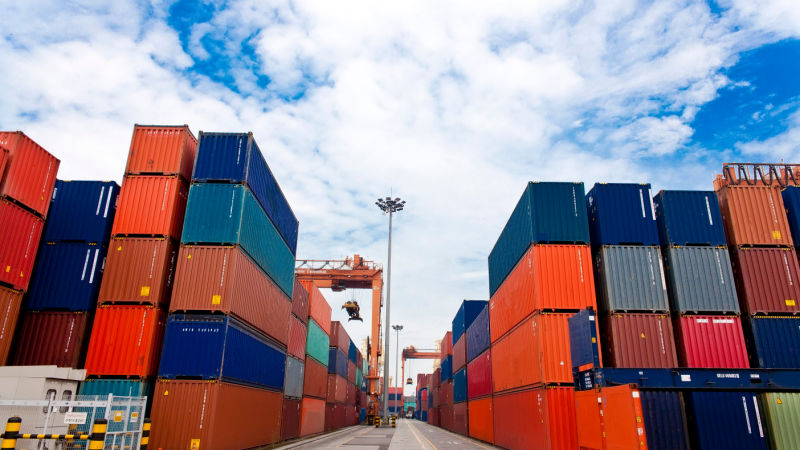
Duties and taxes are the prime revenue sources for a government to meet all the expenses of a country. Most countries also often use these taxes as a tool to safeguard their domestic industries or markets from foreign companies and their invasion of the domestic markets. The primary names in these types of indirect taxes are the customs and import duties that are levied on goods and contribute to increasing their final cost to the ultimate consumers. Discussed below is the meaning of customs and import duties and why they form an important part of the final price of a product.
Read More: New GST rates; Which items will be costlier?
What are customs duties and their significance?
Customs duty is the indirect tax that is levied on any goods that are exported or imported into the country. It is basically a charge that is levied on a specific product when they cross the international borders of a country. The government provides a detailed list of all the relevant goods which are eligible for the levy of customs duty and the rate applicable to them. This list is updated from time to time as per the latest changes in the demand and supply of such goods or any change in the country’s tax structure as well as domestic or inter-country foreign or economic policies. The customs duty in India is under the purview of the Customs Act 1962 and falls under the Central Board of Excise and Customs (CBEC).
Customs duties form a major chunk of indirect tax revenue to the Indian government. These rates are charged on the specified goods at flat rates or on an ad valorem basis, i.e., based on the value of the goods. The applicable rate on any product is based on the HSN code of the said product and duty mentioned against the same in the tariff schedule as per the Customs Tariff Act 1975.
Changes in Custom duties after GST implementation
After the application of GST in India, there have been major changes in the customs duty on exports of goods from the country. Earlier in the old tax system, there was a levy of multiple taxes at different stages like Basic excise duty, service tax, VAT (Value Added Tax), etc.
These taxes were merged into a single taxation system under GST and exports from the country came under the purview of IGST (Integrated Goods and Services Tax). However, as per the latest amendments from the CBEC, the export of goods and services from the country will be treated as a ‘Zero-rated supply’.
This implies that there will be no levy of GST on the export of any kind of goods and services from the country. This is a departure from the previous taxation system which provided input tax credits. These amendments are applied with a view to making Indian exports more competitive in the international markets and increasing them in the long run.
What are import duties and their significance?
Import duties are the indirect taxes levied on goods and services imported into the country. These taxes are passed on to the ultimate consumers by adding them to the final value of such products and services. Import duties also contribute heavily to the country’s revenue and are impacted by various factors like Free Trade Agreements between countries, increases in taxes to safeguard the domestic manufacturing sectors against cheaper foreign products, providing an impetus to the local industries, and leveling the playing field for the domestic manufacturers.
Import duties are also referred to as customs duties, import tariffs, etc. India recently made amendments to the basic customs duty levied on many products like electronics (TVs, mobiles, refrigerators, air-conditioners), furniture, jewellery, footwear, etc.
This move was to discourage the Indian consumer from spending on imported goods thereby reducing the imports in the long run. India is heavily dependent on imports of various goods and services which directly impacts its foreign reserves. Therefore reducing the import bill is of paramount importance to reduce the trade deficit and also put a stop to the decreasing value of INR against foreign currencies.
What are the types of import duties?
There are multiple types of import duties that are levied on goods and services imported into the country. These duties are detailed below.
Basic customs duty
This is the basic duty that is applicable to all imported items that fall under section 12 of the Customs Act, 1962. The applicable rate is as per the HSN code in the Customs Tariff Act, 1975. This duty may range from 0% to 100% depending on factors like the nature of the goods and services or their country of origin.
Countervailing duty (CVD) and Additional customs duty or special countervailing duty
The import duty is levied under section 9 and section 3 of the Customs Tariff Act, 1975 fall under these categories. These duties are levied to compensate for the subsidies given to the exporters and to equalize the imports with local taxes, and other domestic changes and duties that local or state governments levy from time to time. These taxes, therefore, promote fair trade practices and ensure an equal opportunity for local industries to flourish.
Safeguarding duty
This duty is imposed when there is a sudden influx of imports into the country which can potentially damage the local domestic markets. This duty is aimed at making the imported goods and services less attractive to the local consumers and thereby protecting the local industries.
Anti-dumping duty
This is another form of import duty that is levied to protect the domestic markets from being flooded with imported goods. Often many exporters provide cheap exported products at almost throwaway prices which are aimed at crippling the local industries and the manufacturing sector.
This is popularly known as dumping and hence the name Anti-dumping duty. This duty is levied by the government under section 9A of the Customs Tariff Act, 1975 to bring the prices of imported goods at par with the local products. This duty is permissible under the WTO agreements and can be levied only on like or similar goods that are manufactured within the country.
Changes in Import duties after GST
The introduction of GST in the country has changed the tax structure on imported goods and services. As per the GST Act, all imported goods will fall under the purview of the Integrated Goods and Services Tax and tax will be levied on them as per the IGST Act, 2017. Therefore, imported goods will be subject to the levy of BCD (Basic Customs Duty) and IGST along with cess and other applicable taxes like safeguard duty, Anti-dumping duty, etc.
The calculation of IGST on imported goods will be on the value of goods after the levy of BCD and as per the prevailing IGST rate.
Conclusion
Import duties and customs duties are part of the indirect tax regime of the country and are to be paid by every person irrespective of their residential status or income status, unlike direct taxes. The government brings changes to these duties from time to time to meet the expectations of the exporters as well as protect the domestic manufacturing sector at the same time safeguarding the interest of the country at large.
FAQs
Yes. BCD (Basic Customs Duty) is applicable on all imports into the country and certain specified exports from the country as per the provisions of the Customs Tariff Act, 1975.
The CBIC portal Indian Customs Electronic Gateway (ICEGATE) provides the Customs Duty Calculator that can be used to identify and calculate the applicable BCD on imported goods.
Yes. The input tax credit is available to registered importers by providing their GSTIN in the Bill of Entry and can use against payment of taxes for the outward supply of goods.
A Free Trade Agreement between two countries is aimed at reducing the barriers between imports and exports as well as the number and rate of tariffs and duties imposed on trade between the partner nations.
Other interesting reads



























